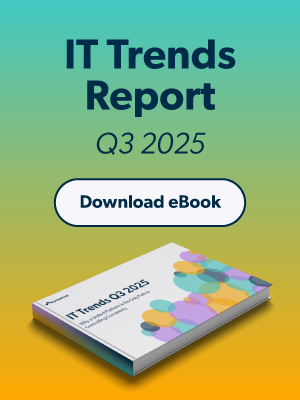Updated on February 14, 2025
The cybersecurity landscape is evolving rapidly, and with it comes the need for more robust and innovative approaches to securing digital resources. Among these advancements is the rise of Continuous Authentication (CA) — a cutting-edge strategy designed to enhance both security and user experience. Unlike traditional authentication methods, CA offers an ongoing validation process, ensuring that access remains secure throughout a user’s session.
This article dives deep into the concept of Continuous Authentication, explaining its key features, benefits, challenges, and real-world applications.
What Is Continuous Authentication?
Continuous Authentication is a dynamic approach to identity verification that operates seamlessly in the background, continuously validating a user’s identity throughout their session. Unlike traditional one-time authentication methods, such as logging in at the start of a session, CA uses various metrics to monitor and verify user activity in real-time.
How Does Continuous Authentication Work?
CA leverages behavioral biometrics, contextual data analysis, and real-time risk assessments to continuously evaluate the legitimacy of a user’s access.
This means that instead of relying solely on static credentials like passwords, CA monitors ongoing behavior to ensure that the authenticated user remains the same throughout the session.
Key Elements of Continuous Authentication:
- Behavioral Biometrics: Analyzing unique patterns such as typing speed and rhythm, mouse movement, or touchscreen gestures.
- Contextual Data: Monitoring environmental factors like device location, network type, and time of access.
- Adaptive Risk Scoring: Dynamically adjusting authentication requirements based on real-time risk levels, ensuring stricter scrutiny during suspicious activity.
By focusing on these elements, CA drastically reduces opportunities for unauthorized access and session hijacking.
Why Continuous Authentication Matters
The increasing sophistication of cyber threats like phishing and session hijacking has made traditional authentication methods insufficient on their own.
Continuous Authentication addresses these gaps by offering several distinct advantages:
- Enhanced Security: By validating users throughout the session, CA minimizes risks of exploited credentials, mitigating threats like session hijacking or account takeovers.
- Improved User Experience: Unlike traditional methods that require frequent re-authentication, CA works unobtrusively in the background, eliminating interruptions for legitimate users.
- Alignment with Zero Trust: Continuous Authentication aligns seamlessly with the Zero Trust security framework. By operating under the “never trust, always verify” principle, CA ensures continuous scrutiny without impeding workflows.
- Proactive Threat Detection: Suspicious behaviors are flagged and acted upon in real-time, allowing businesses to respond quickly to potential breaches before damage occurs.
Key Features of Continuous Authentication
To fully understand the power of Continuous Authentication, it’s essential to explore its defining features:
Non-Intrusive Operation
CA works in the background, seamlessly analyzing user behavior without interrupting the user experience.
This ensures that security measures are effective while maintaining a smooth and non-disruptive workflow, striking a balance between security and usability. Users can go about their tasks without even realizing authentication is happening.
Behavioral Metrics
By monitoring unique user behaviors such as typing patterns, mouse movements, or touchscreen interactions, CA creates a personalized security profile for each individual.
These behavioral metrics are difficult to mimic, making authentication more secure and tailored specifically to the user. Over time, the system becomes even more accurate as it adapts to subtle changes in user behavior.
Contextual Factors
Details like device type, IP address, time of access, and geolocation add an extra layer of verification to authentication systems.
These contextual factors ensure that access attempts align with normal, expected user behavior. If anomalies are detected, such as an unusual location or device, additional checks can be triggered to verify the user’s identity.
Adaptive Risk Scoring
The system evaluates behavior and activity in real-time to calculate dynamic risk levels.
This adaptive risk scoring ensures that low-risk scenarios, like routine logins from familiar devices, proceed without interruption, while high-risk situations trigger additional authentication steps. By focusing on risk-based responses, this approach ensures maximum security without unnecessary friction for users.
Benefits of Continuous Authentication
Adopting Continuous Authentication offers a range of benefits for organizations:
Enhanced Security Across Sessions
Static, one-time logins can be a significant vulnerability. CA ensures ongoing validation, providing an extra safeguard against stolen credentials and insider threats.
Superior User Experience
Frequent logins can frustrate users and reduce productivity. CA mitigates these pain points by operating silently in the background.
Compliance Support
Industries with strict regulations, such as finance and healthcare, demand advanced authentication methods. CA meets these requirements by offering continuous risk assessments and auditable security practices.
Real-Time Threat Detection
CA identifies anomalies—such as mismatched behavioral patterns or unusual login locations—and takes preemptive action.
Challenges and Limitations
Turning on Continuous Authentication is not a simple flip of the switch; there are numerous challenges involved with its rollout, including:
- Data Privacy Concerns: Behavioral data can be highly sensitive. Organizations must handle it responsibly and comply with global privacy standards.
- Integration Complexities: Incorporating CA into legacy systems can be daunting, requiring careful planning and expertise.
- Performance Issues: Extensive real-time monitoring demands computational resources. Striking a balance between accuracy and performance is vital.
- False Positives/Negatives: As with any system, CA may occasionally misidentify legitimate users or fail to detect threats, disrupting workflows.
How to Implement Continuous Authentication
For organizations looking to incorporate Continuous Authentication into their security framework, here are the steps to follow:
1. Evaluate Your Current Security Environment
Start by thoroughly assessing your existing authentication methods, such as passwords, two-factor authentication, or biometric systems. Look for gaps or vulnerabilities in your current setup that CA could address, and review your existing stack to see what capabilities and features you may be lacking.
2. Determine Scope of Implementation
Identify the specific systems, applications, and user groups where CAn will deliver the most value.
Focus on areas with high-security needs or frequent user interactions, such as financial systems, sensitive data environments, or customer-facing platforms. This will help prioritize your implementation efforts for maximum impact.
3. Deploy Advanced CA Tools
Choose and deploy the right tools for CA, such as behavioral biometrics solutions, conditional access solutions, and (more cutting-edge) AI-driven risk analysis technologies.
These tools analyze user behavior, like typing patterns or browsing habits, to verify identity seamlessly and continuously. Wherever possible look to integrate CA tools with your existing Identity and Access Management (IAM) systems to simplify deployment and create a unified security infrastructure.
4. Train Staff and Educate Users
Provide training to your staff on how CA functions, its benefits, and how it works alongside other security measures.
In addition, be sure to educate end users on how CA enhances both their security and their user experience by reducing the need for constant logins or manual authentication. A well-informed team and user base can help ensure the successful adoption of CA within your organization.
Best Practices to Consider
- Apply least privilege principles to limit access to only what is necessary. This ensures that employees or systems only have access to the data and resources they need to perform their tasks, reducing the risk of accidental or intentional misuse.
- Conduct regular testing to refine your CA processes. Regular audits and stress tests help identify vulnerabilities, ensuring your controls are up-to-date and effective in mitigating potential risks.
- Maintain transparency by informing users about how their data is being used and protected. Clearly communicate data practices through privacy policies and updates, building trust and ensuring compliance with data protection regulations.
Real-World Applications of Continuous Authentication
Enhancing Financial Security
Financial institutions rely on CA to strengthen the security of online banking platforms.
This advanced technology monitors behavioral metrics such as typing speed, mouse movements, and even navigation patterns to identify users in real time. By doing so, it can quickly detect and block people attempting to access accounts fraudulently, even if they’ve managed to steal passwords or other credentials.
Safeguarding Healthcare Data
Healthcare systems integrate CA as a critical component for meeting strict compliance requirements, such as HIPAA.
By continuously verifying user identity, CA ensures that only authorized personnel can access sensitive patient records and medical data. This not only prevents breaches but also protects patients’ privacy and maintains the integrity of healthcare workflows, ensuring seamless and secure access for medical professionals.
Securing Cloud Environments
Hybrid and multi-cloud environments are increasingly common, making CA essential for safeguarding sensitive workloads.
CA verifies users throughout their sessions, ensuring that only authorized individuals can access critical data and resources. This is particularly important in extended sessions, where traditional authentication methods may fall short.
Continuous Authentication is no longer a futuristic concept—it’s a vital component of modern cybersecurity strategies. By offering robust protection without compromising user experience, CA represents a significant leap forward in securing digital ecosystems.
Frequently Asked Questions
What is Continuous Authentication, and how does it work?
Continuous Authentication is a security process that monitors user behavior and biometrics in real time to verify identity throughout a session, not just at login. It uses factors like typing patterns, device usage, and location to ensure the user remains authenticated.
How is Continuous Authentication different from traditional authentication methods?
Traditional authentication verifies identity only at login, while Continuous Authentication provides ongoing verification during the entire session, reducing the risk of unauthorized access.
What are the key benefits of Continuous Authentication?
It enhances security by identifying potential threats in real time and improves user experience by allowing seamless access without frequent re-authentication.
What challenges should organizations consider when implementing Continuous Authentication?
Challenges include ensuring user privacy, managing the complexity of implementation, and maintaining accuracy to avoid false positives or negatives.
What are some real-world examples of Continuous Authentication?
Examples include financial institutions monitoring typing patterns during transactions or mobile apps using facial recognition and behavioral analysis to verify users.
Glossary of Terms
- Continuous Authentication: A security approach that verifies user identity continuously rather than just at login.
- Behavioral Biometrics: Identifies users based on unique behaviors like typing patterns or mouse movements.
- Contextual Data Analysis: Evaluates environmental factors, such as location and device, to enhance security decisions.
- Real-Time Risk Assessments: Analyzes potential security threats instantly for proactive responses.
- Zero Trust: A security model that requires strict verification for every user and device, regardless of location.
- Principle of Least Privilege: Grants users only the minimal access necessary to perform their tasks.





